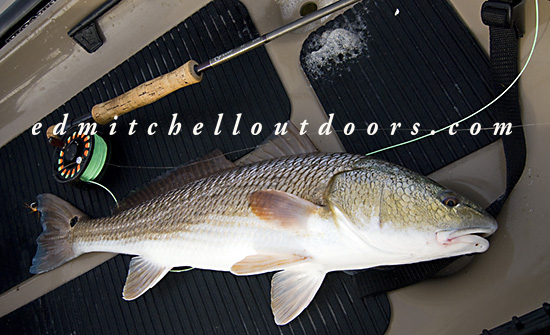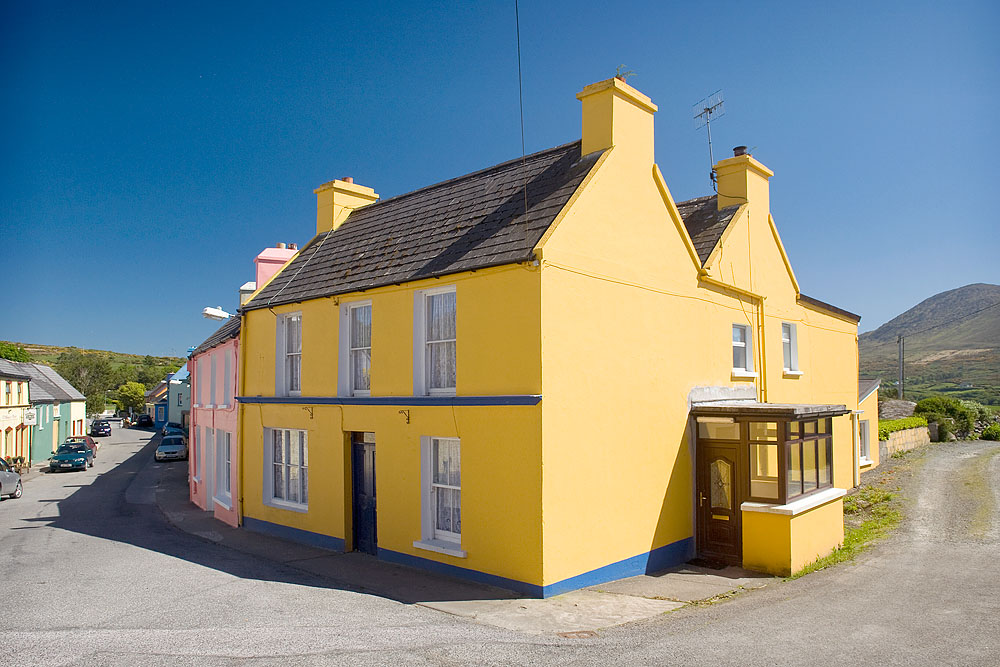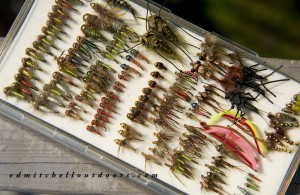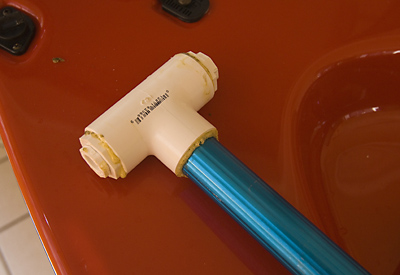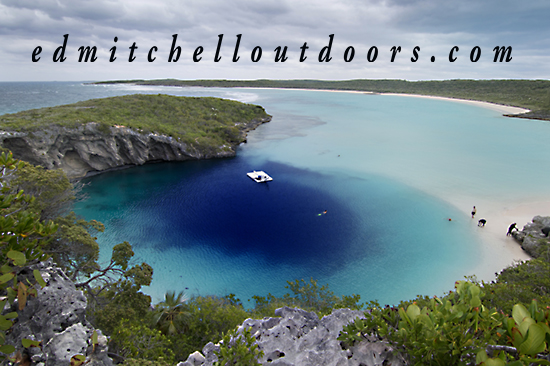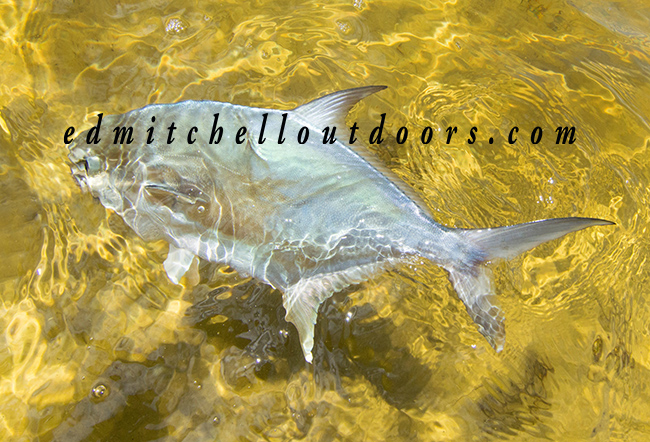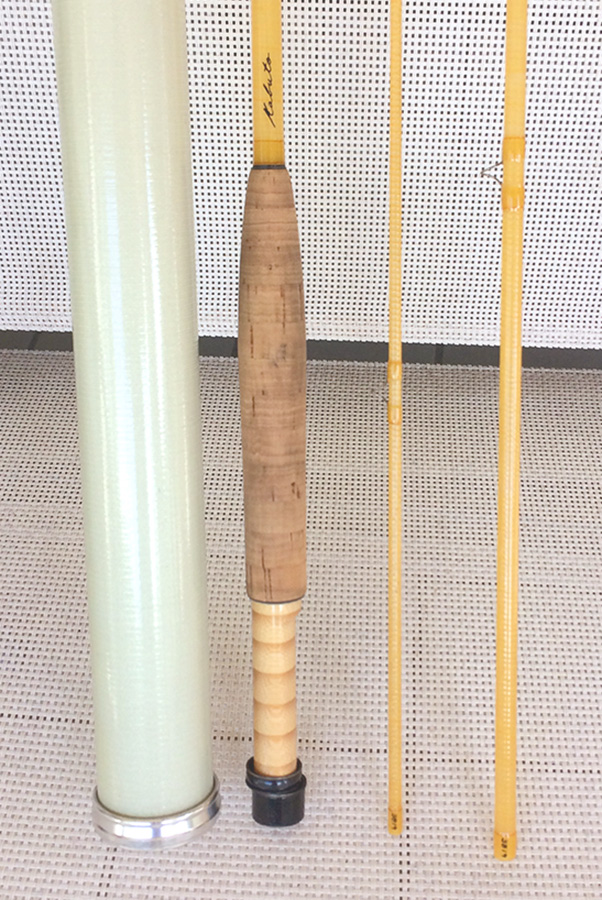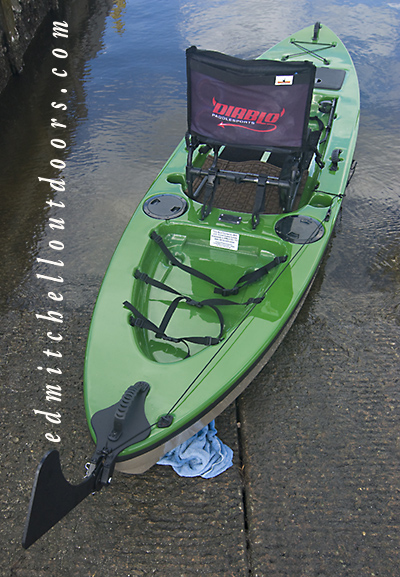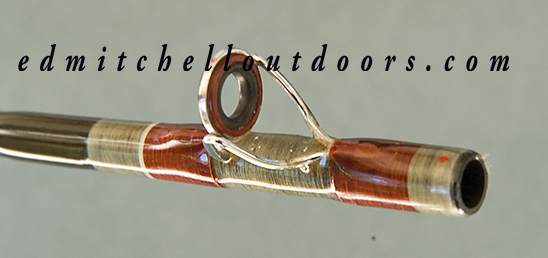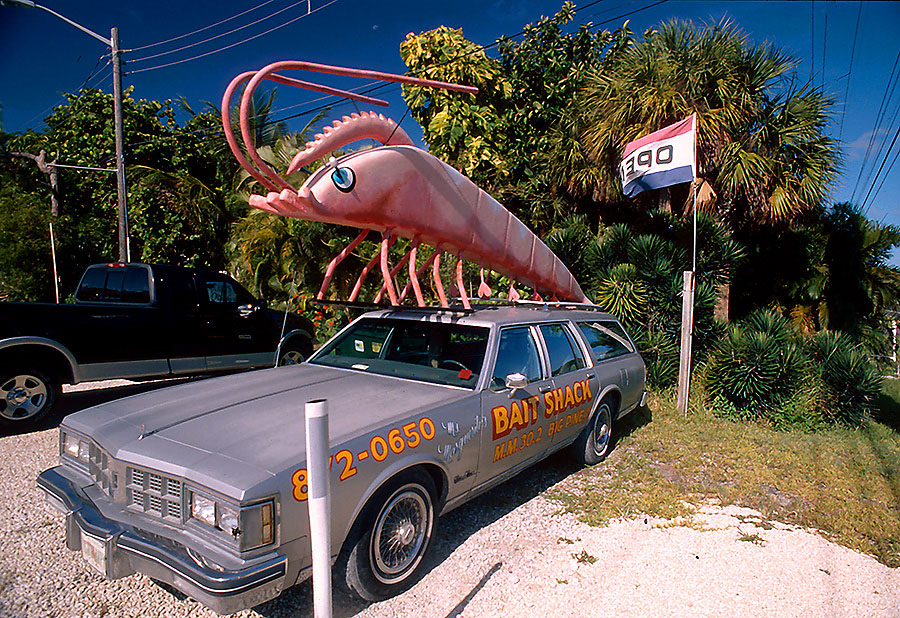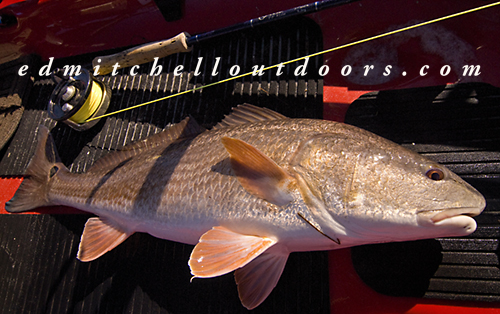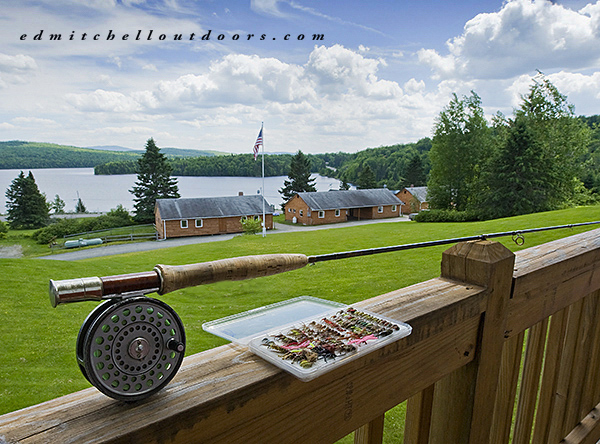More on Soft Hackles
Been fishing. Unbeknownst to me the stream had been stocked the day before I arrived. That’s the good news. The bad news is everybody else in town must have known. The place was packed with anglers. Oh well, that’s the nature of public waters. And sometimes it isn’t just angling pressure you face. Many public waters have multi recreational uses. Tubers, canoers, kayakers, and swimmers. They can all get into the act. Grin and bear it, I guess.
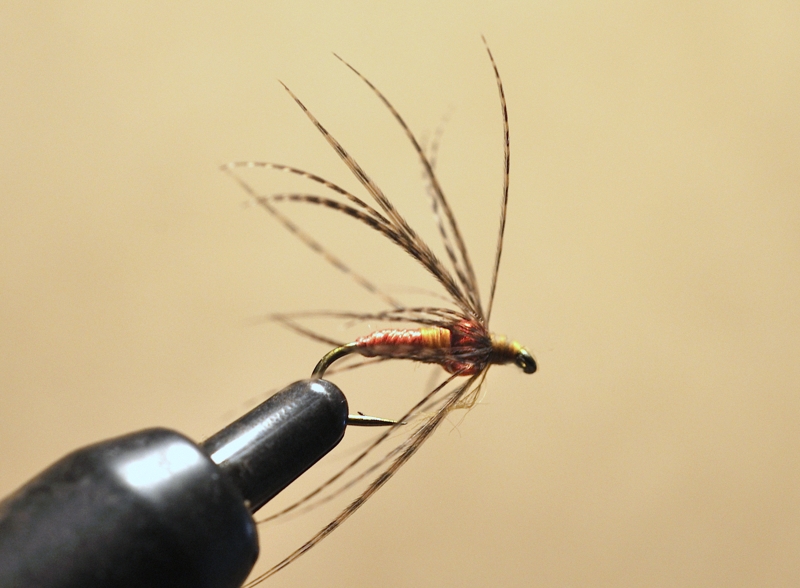
Well last time out, I started out with nymphs. But after a half hour of no strikes, I decided to try a soft hackles. Bingo, first cast! Wow soft hackles are great. We covered them a few posts back , but lets take another look at them. This time we’ll examine how they are constructed. And I’ll tell you a little about the one I tied above.
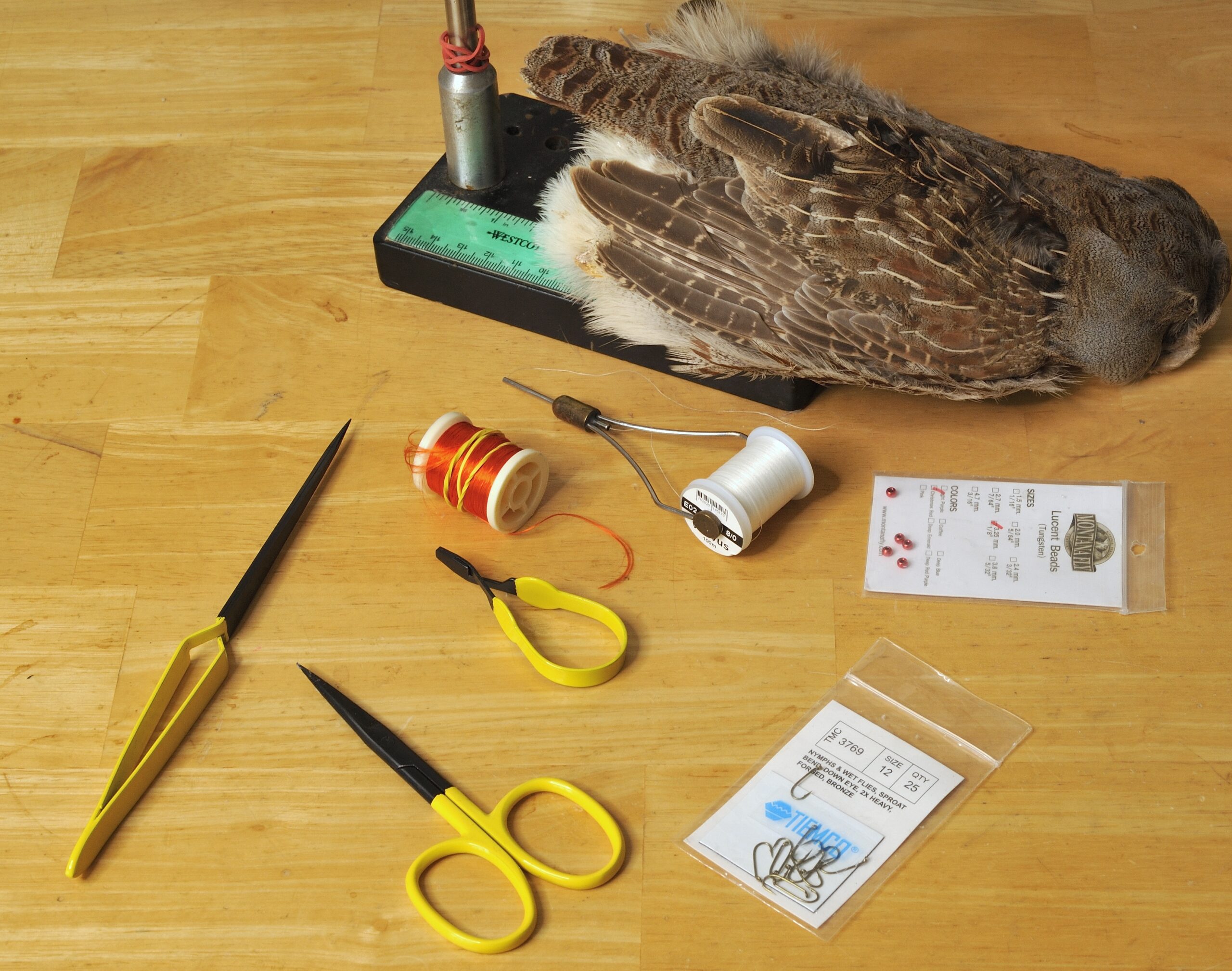
The materials are pretty basic. A straight shank wet fly hook. Partridge hackle, typically. And a body material of your choice. That’s it. Now I’m going to add a tungsten bead. It is purely optional, but it helps get the fly down a bit. Some folks put the bead up by the eye. I’m going to place it father back. Why? When tied behind the hackle it splays the hackle out, giving it more action in the water.
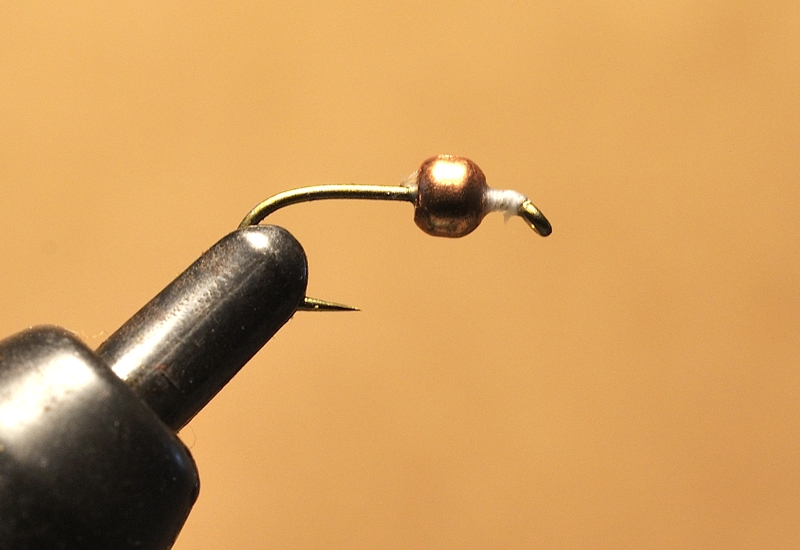
If you opt for a bead, you’ll want to use the right size. Here is some general advice. A size 3.6mm (5/32″) bead for a size 10 hook. A 3.25mm (1/8″) bead for a size 12 hook. A 2.7mm ( 7/64″) for a size 14 hook. And a 2.0mm (5/64″) for a size 16 hook.
Now hold on. There is one more thing to consider. You have to check if the bead will actually go on your hook bend! Some hooks can be a problem, believe me. Test your hook first to see if things are going to fit. I’m using a Mustad 3769.
Put the bead on the hook. Then tie a thread base about a third of the way back from the hook eye. Build up the thread until the bead gets snug when forced on to it. I like to put a drop of glue on the thread and then jam the bead on it. Next tie off your thread and cut it off. Move it behind the bead and tie in a body material of your choice. Wrap the body forward and tie off  behind the bead. In the fly I tied above, I used silk button hole twist. It is easy to work with. Comes in a wide variety of colors, and doesn’t change colors when wet.
behind the bead. In the fly I tied above, I used silk button hole twist. It is easy to work with. Comes in a wide variety of colors, and doesn’t change colors when wet.
Cut your thread again and move it forward of the bead. Prepare a hackle as shown below, stroking the fibers back to expose the tip of the feather. Then tie the tip in forward of the bead. Using your hackle pliers, make two or more turns of hackle. Your choice. Tie off. Whip finish. Your done.
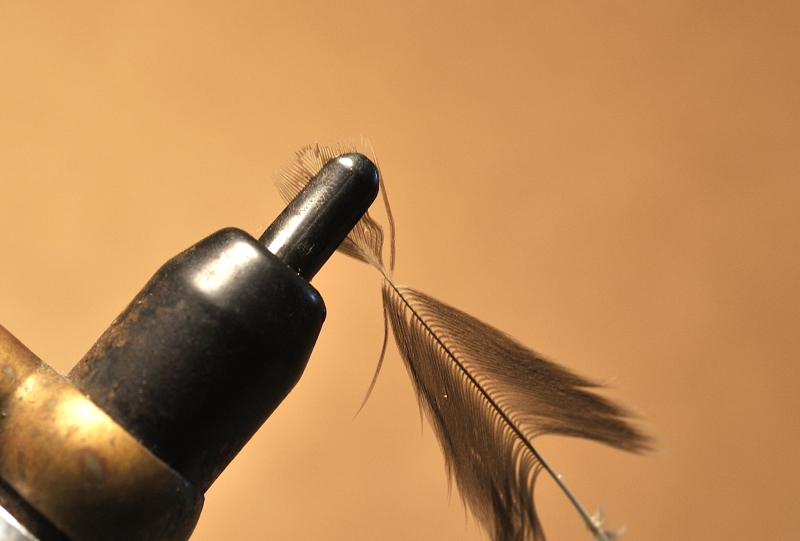
As you can see in the fly I tied above, the bead tends to splay the hackle fibers outward. I like that. How long should the fibers trail back? Some commercial flies use only a hook length of hackle fibers. I tie them much longer. Around 1.5 time the hook length. But its your choice. Good luck on the water.



